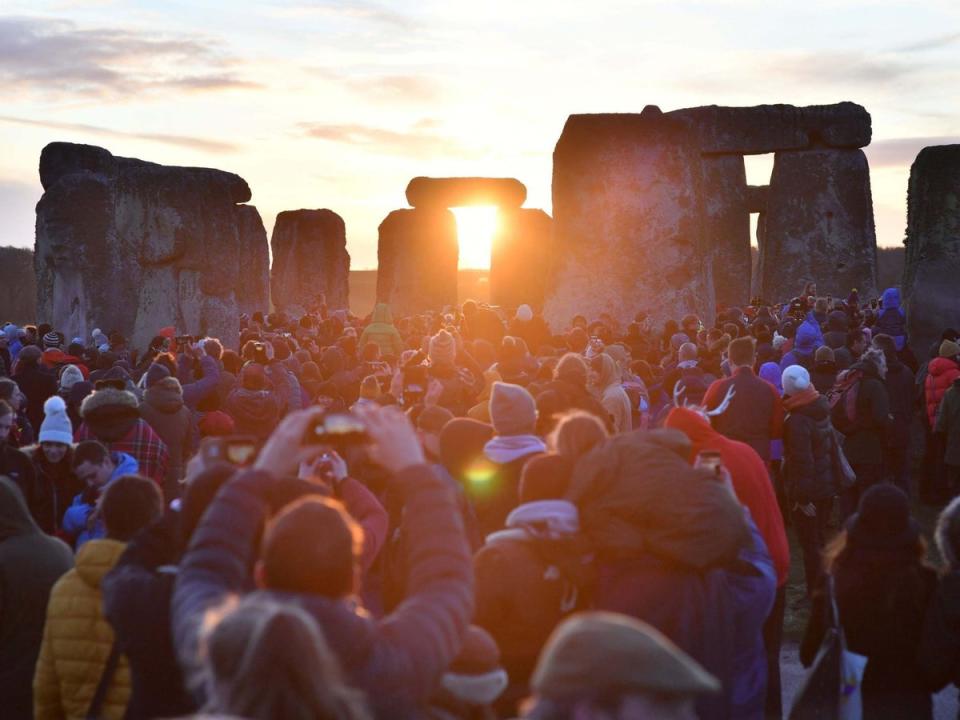Winter solstice 2022: Everything you need to know about the shortest day of the year

As the southern hemisphere celebrates the start of summer, those north of the equator will experience the shortest day of the year, known as the winter solstice. This year, it falls on Wednesday 21 December, the first day of winter.
The word “solstice” derives from sol, the Latin word for sun, and sistere, which means “to come to a stop or make stand”.
Arriving on the same day across the globe, a solstice occurs when the sun reaches its lowest or highest point in the sky during the year as a result of the Earth’s axis tilting to or away from the sun.
For people who live in the Northern Hemisphere, this Wednesday will be the one day of the year with the shortest period of sunlight. The solstice will begin on 4:48pm ET on 21 December, when the Earth is at its maximum tilt, 23.5 degrees, away from the sun.
The solstice also occurs when the sun is directly over the Tropic of Capricorn, which is located “south of the equator and runs through Australia, Chile, southern Brazil, and northern South Africa,” according to the National Weather Service.
For the Southern Hemisphere, it’s the opposite case, as 21 December marks the one day of the year with the longest period of sunlight.
Historically, the winter solstice has been of great importance to many cultures, such as Ancient Egypt and Ancient Rome, often as a marker for the passing seasons, and a possible time of rebirth.
In northern Europe, from the Faroe Islands to Estonia, Germanic peoples have long celebrated the event, which became known as Yule.
While Yule dates back to the Norse people, who celebrated the sun’s rebirth for 12 days, it was also celebrated by Anglo-Saxon pagans.
According to Pliny the Elder, in Britain, druid priests would mark the important date by gathering mistletoe and sacrificing bulls – which was also likely a practical measure to limit the number of mouths to feed during months of famine.
In addition to mistletoe and 12 days of festivities, several Christmas traditions, such as Yule logs and decorating trees, date back to Yule, which were later adopted and adapted by Christians.
But the winter solstice is still celebrated in parts of the UK and US. The most popular annual tradition sees druids, pagans and enthusiasts gather at Stonehenge to watch the sun rise.

 money
money 